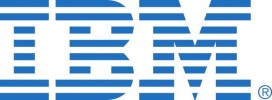Data Destruction: What It Is and Why It Is Important 20 Jul 2021
Today, all businesses rely on technology. Whether their dependence stems from an operational level to storing sensitive and necessary data across a shared network, companies big and small all have a digital trail.
When it comes to retiring or replacing a device, however, this digital trail can become problematic. In the wrong hands, sensitive data can be extremely valuable. From payment to personal details, even company strategies and long-term plans, no business wants this information to be lost. Therefore, the protection of this data is paramount.
One way to ensure this data remains private and safe is through data destruction. When it comes to redistributing IT devices or recycling an old device, data destruction plays a significant role in data protection.
But, firstly, what is data destruction?
Put simply; data destruction is the deletion of any data from an IT device. This includes hard drives, hard disks, tablets, mobile phones, laptops, and any other IT asset with stored data. Unfortunately, deleting data by placing it within your recycling bin will not completely remove this data from your device. Similarly, erasing data with tools of the internet is also not always effective. When it comes to your recycling bin, a trace of your data is still visible on the computer’s hard drive. With internet tools, especially when businesses store large amounts of data, there is no guarantee that all the data can be wiped.
Methods of data destruction can instead be used to eliminate data from hard drives and other forms of electronic media to a higher degree of certainty. As most companies wipe data for security reasons, having the ability to guarantee the success of your data destruction is crucial. Moreover, using internet tools where there are questions surrounding their effectiveness could possibly lead to a separate security risk.
Data destruction services, however, can provide companies with the peace of mind that their data has been deleted to varying degrees of accuracy. This assurance allows sensitive data to stay confidential and remove the chance of unauthorised users gaining access. We recommend using WipeDrive’s market-leading data wiping software, so you can be 100% sure your data has been irreversibly removed from your IT assets.
Why is it important to destroy data?
Ensuring that data is successfully removed from your assets is so important to your business for a number of reasons. Effective and thorough data erasure can provide:
- Individual and corporate security
- Protection against identity theft
- A defence against corporate espionage
- Removal of all IT assets from a device
- Avoiding potential cyber attacks
And, additionally, it can help enhance your company’s track record. If your prospective clients and customers can see the measures you take to keep their details safe, they will be more inclined to give you their loyalty. But, on the other hand, a data breach would be highly damaging to your business’s reputation.
How can data be destroyed?
There are a number of ways data on desktop computers, laptops, tablets, and even phones can be destroyed. A method that can increase the guarantee that no usable residual data is left on your device is data sanitisation. Some forms of data sanitisation can delete your data permanently.
Methods of data sanitisation include physical destruction, degaussing and data overwriting.
-
Physical Destruction
Physical destruction involves inflicting actual damage to a hard drive, rendering the data stored on there inaccessible. This damage can be caused by shredding or pulverising the hard drive or hard disk. Similar processes improve hammering or drilling holes with the drive, so it becomes inoperable. However, small parts of the drive platter which are still intact could very possibly still contain your data. And, this is only a viable option if you no longer require the asset.
-
Degaussing
Degaussing a hard drive requires a high-powered magnet. Using this magnet in close proximity to a hard drive, the drive’s magnetic field is disputed, and the data is destroyed. Similarly to physical destruction, this process can affect the hard drive’s mechanical components causing its alignment of parts to become damaged, resulting in the asset becoming too damaged to reuse. Also, it is not possible to run verification software to see how much of your data is still on the hard drive.
-
Data Overwriting
Overwriting involves removing old data on a hard drive by writing new data in its place. This method leaves any old data readable, as the same physical storage units on the drive are used. The data wiping process uses a combination of 1s and 0s to write a pattern directly on top of the old data.
Any old information contained on the drive is therefore unreadable. Instead, the data wiping process writes a pattern of 1s and 0s over what was originally there.
For more information about data destruction methods, view our previous blog comparing physical data destruction to data wiping.
At Global EMEA, we have partnered with WhiteCanyon Software, specialising in data destruction using advanced data destruction software. Their WipeDrive Software is so secure it can be used for government organisations and corporations with sensitive information.
The product is more advanced than standard data sanitisation software in that there are multiple deployment methods and wipe patterns. For example, storage can be wiped from individual computers or remotely, so drives on a branch or remote machines can be erased. In addition, the software can be implemented on loose drives and data centre servers.
Find out more about WipeDrive today. For more information, call us on 0345 340 3105 to speak to our team, or fill out our enquiry form here.








